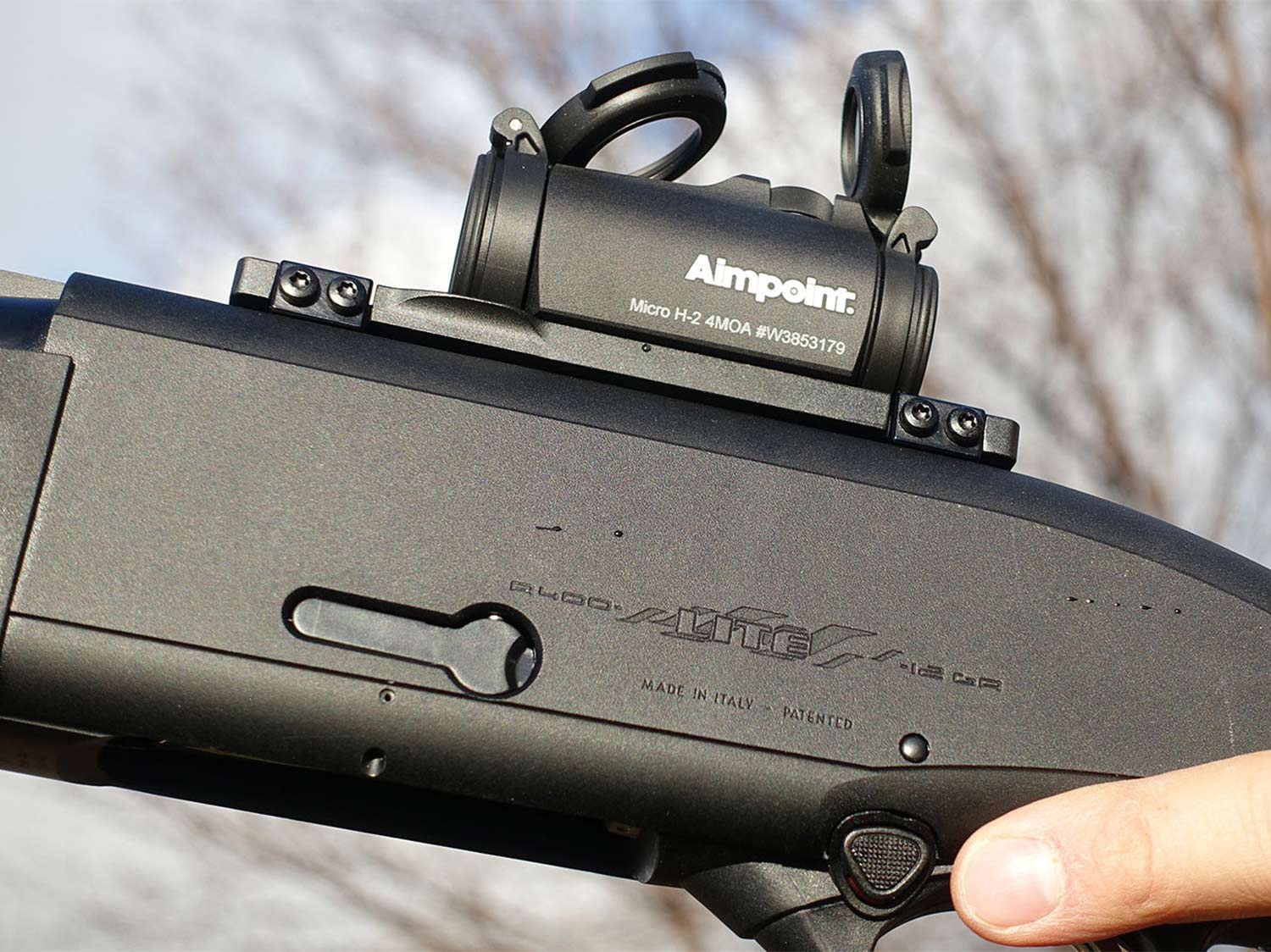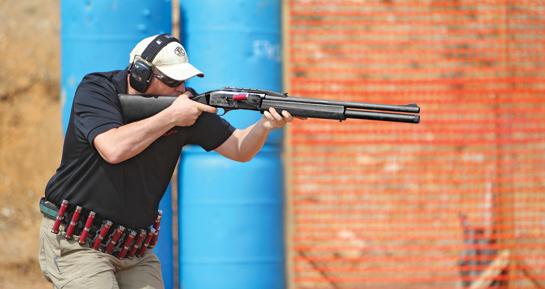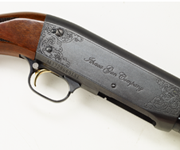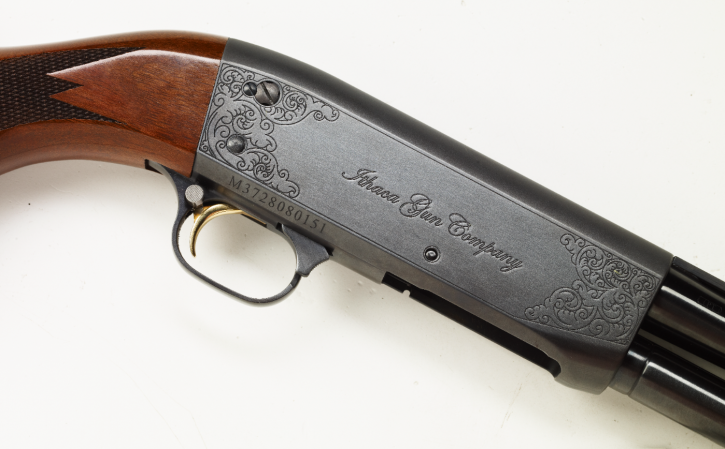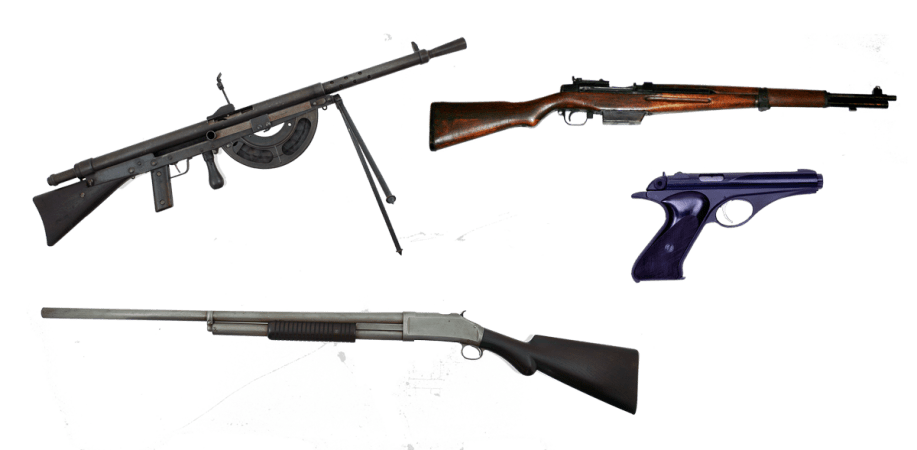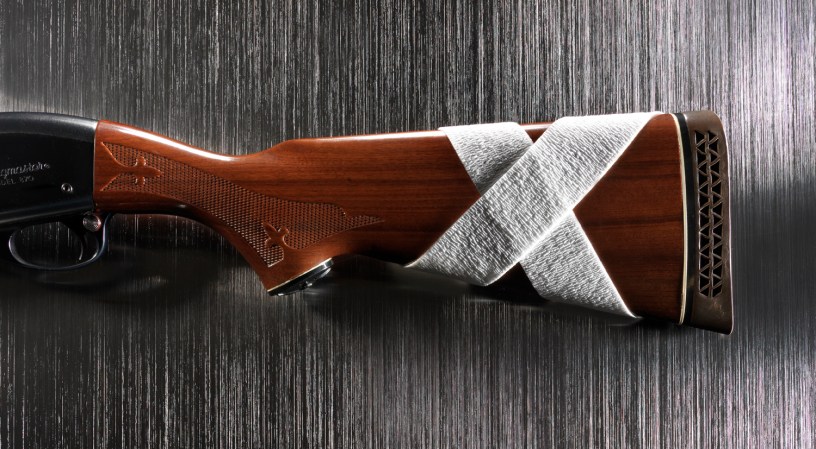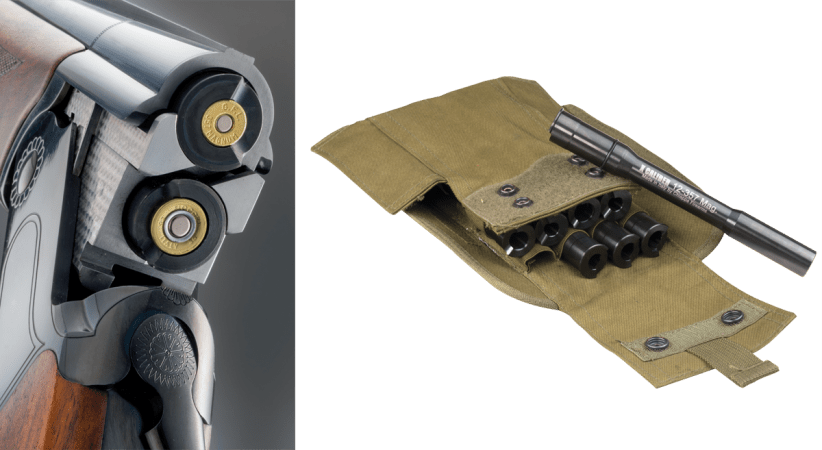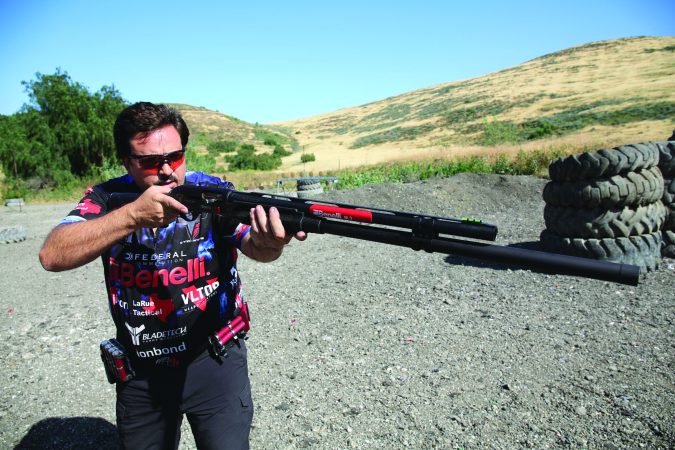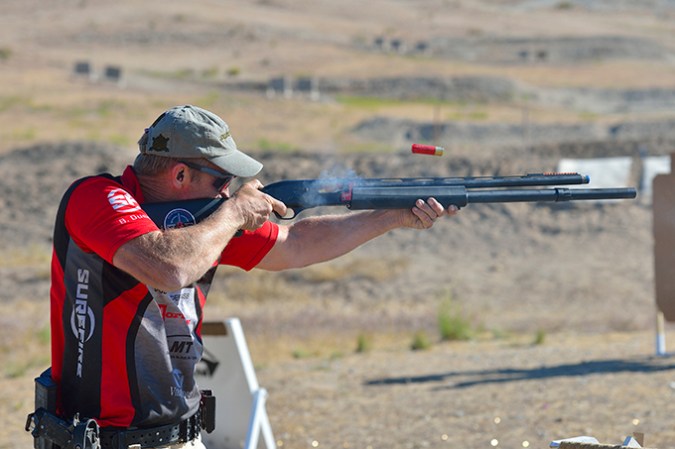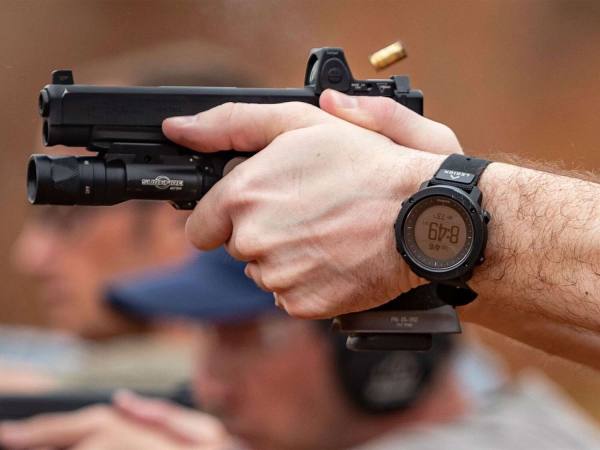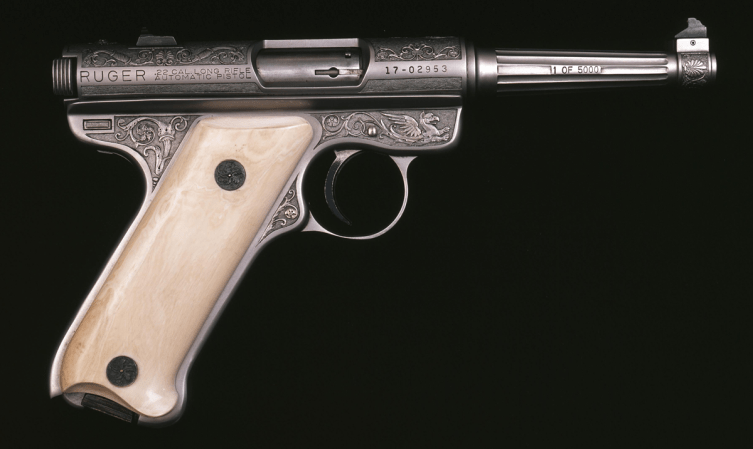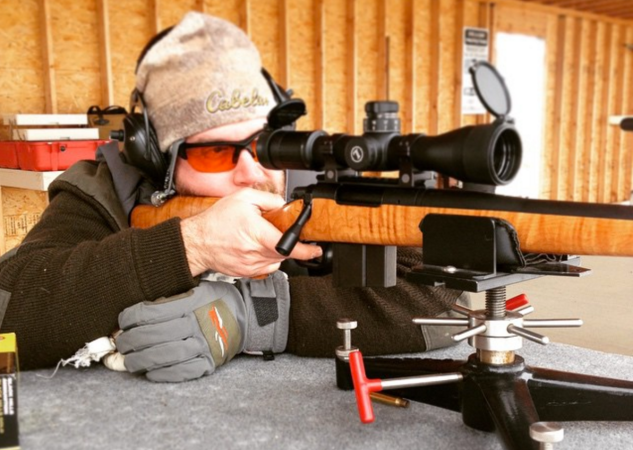We may earn revenue from the products available on this page and participate in affiliate programs. Learn More ›
The 12-gauge pump shotgun is touted as the ultimate home defender. It’s far from a one-trick-pony and about as general-purpose of a firearm as you can buy. A shotgun can take the place of a rack of assorted rifles as long as you’re shooting at shorter distances, and can be used for hunting, garden pest control, guarding the family campsite, and, of course, defending your home.
The pump shotgun is relatively easy to use and requires little skill to be an effective shot. As far as maintenance is concerned, the pump is the workhorse of long guns, and might be the most passed over firearm by homeowners. Many think a handgun or even AR-15 are better options, but neither is as forgiving in terms of accuracy and stopping a threat. Shotguns cast a wider shot pattern, and can take down an intruder even in the most inexperienced hands.
Once properly set up, the 12-gauge shotgun is probably the best all-around choice for the average homeowner seeking a defensive firearm. With an extended magazine tube, or detachable box magazine loaded with 00 buckshot, the shotgun brings overwhelmingly effective firepower to a close-quarter fight.
Losing the Tactical Advantage
One disclaimer I’d like to make right out of the gate: It has been said, and often repeated, that the simple sound of racking a shell into the chamber of a shotgun is enough to repel the most determined intruders. This mindset is incredibly naïve. When armed, and responding to a potential threat, your firearm should be loaded, with the safety on and positioned at your choice of ready position. It’s a mistake to think racking a shell into the chamber as an act of intimidation will scare an intruder off like you see in Hollywood movies. You have actually just lost the tactical advantage and told a potential adversary 1) you’re armed, 2) what you’re armed with, 3) your location, 4) your magazine capacity is limited, and 5) you’re untrained.
Load Versatility
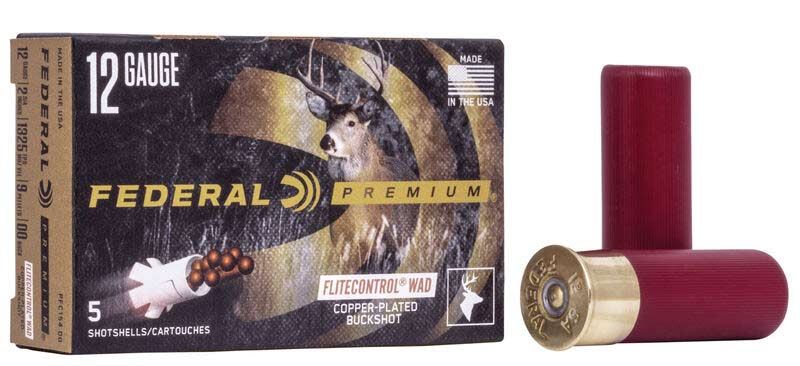
Home defense can mean a lot of different things depending on your geographic location. If you live in a high-crime urban area, human intruders may be your primary threat; whereas in more suburban and rural settings, you may find yourself defending pets or livestock from wild predators like coyotes, wolves, and so on. I once shot a black bear—who thought my porch was his to roam—with a non-lethal bean bag round from a 12-gauge to scare him off. If you only have one gun, load variation is an important consideration, which makes the shotgun an ideal home defense platform.
Shotguns can fire an array of standard and non-standard specialty ammunition. Ammo manufacturers offer numerous game-specific loads for practically every animal that walks the planet. Birds, rodents, predators, small game, medium game, large game, dangerous game…they’re all covered.
The primary benefit of these loads is that most of them fire multiple projectiles (that is, pellets of varying size) each time you pull the trigger, increasing your chances of impacting the target. As the distances from the muzzle increase, so does the spread of the projectiles. The pellets spread like a cone shortly after leaving the muzzle. How wide or concentrated that cone is depends on the load and choke. As an example, 00 buckshot should hold an IPSC A-zone at 15 yards and a 30-inch circle at about 25 yards. Meaning all pellets should impact within these parameters. Some may land more toward the center, while others will impact toward the perimeter.
Shotshell Options
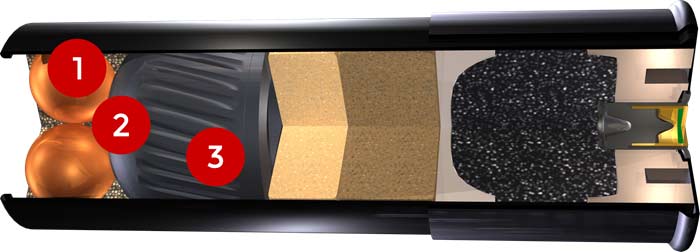
- Birdshot contains hundreds of very small pellets that, when fired, quickly spread into a wide cone once they leave the muzzle. Because the projectiles are so small and lightweight, they lack the energy needed for deep penetration. As such, lethality against humans isn’t likely at distances much further than the end of the muzzle, making it wholly inappropriate for personal defense. Denser turkey loads can dispatch varmints, like coyotes and raccoons, but should not be relied on for personal defense.
- Buckshot is a devastating round at close range, especially to thin-skinned humans. With each shell fired, nine .33-caliber pellets are launched through the air. It’s like nine 9mm bullets impacting your target at once. The results are just as you would imagine—it’s a fight stopper. There is also minimal spread between projectiles in close quarters, allowing for accurate fire.
- Slugs add range and increased precision to home defense, but due to their ability to penetrate deeply, I do not recommend using them inside the house, particularly when you have a spouse, children, roommates, or pets living with you. The projectile could shoot through walls and injure or kill a family member or friend. The slug is ideally used in the outdoors to defend against larger predators. A 1-ounce chunk of lead impacting a target at over 1,500 feet per second can do a substantial amount of damage. Its effective range through a smoothbore barrel is about 100 yards, and accuracy is surprisingly good. One of my favorite slugs is from Winchester’s PDX-1 Line that launches a segmented 1-ounce slug. Once the slug impacts a soft target it breaks apart into three separate pieces, minimizing the chances of over-penetration. Winchester also makes a buckshot/slug combo that includes a 1-ounce slug and three buckshot pellets designed to increase the chances of impacting your target. Even if the slug misses, you may still tag the target with one of the buckshot pellets.
Pump vs. Semiautomatic

Pump-actions are the most popular defensive shotgun because they are easy to operate and reliable. The shooter manually slides the pump back and forth to eject a spent round and load a fresh shell into the chamber. The pump can be short-stroked, meaning the action has not run all the way back or forward, which can result in a malfunction. But once you’ve gotten to know the platform, properly cycling the action quickly becomes second nature. Another benefit of the pump-action shotgun is that it will accept reduced-recoil loads, less lethal projectiles, and other specialty shells.
The semi-automatic shotgun can be a reliable home defense tool too, as long as it’s well maintained and used by someone with a good handle on recoil management. If you’re using an inertia-driven gun, it needs to be loaded with shells that have a heavy charge (at least 1 1/8-ounce). Gas-operated guns will cycle more reliably. The buttstock of inertia guns must be firmly placed against your shoulder (the action needs that backstop to operate properly). If you’re using a semi-auto shotgun, choose a reliable load and stick with it. Whichever platform you pick, select a gun that will shoot 3-inch loads. You don’t need a 3½-inch gun, unless you enjoy recoil.
Read Next: Handguns, Shotguns and Rifles for the Survivalist
Selecting a Barrel Length

Shotguns are typically longer than rifles. In fact, 18.5-inches is the shortest barrel length you can legally own, compared to 16 inches on a rifle, without going the National Firearms Act route or obtaining a “firearm” variant. Add on a traditional stock and you’ve got a lengthy platform.
For home defense, I recommend selecting a model equipped with an 18.5-inch barrel. Barrel length isn’t much of a problem hunting upland birds in an open field, but it becomes a challenge when maneuvering within the confines of your house. Barrel length can mean the difference between effective and unwieldy. Shorter is better in this case, and given the relatively short effective range of a smoothbore barrel, there are no appreciable benefits to going long.
Buy an Adjustable Stock
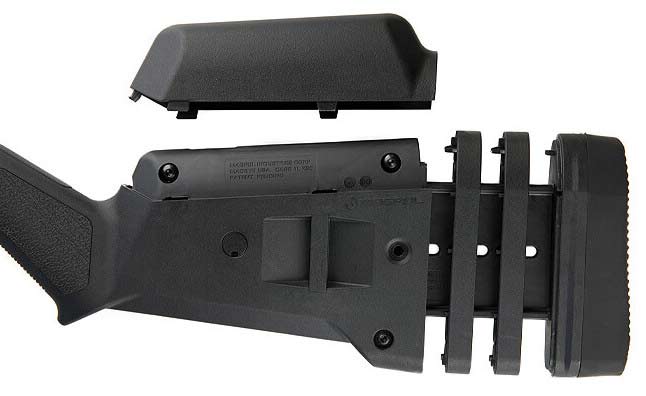
One size doesn’t fit all. You have to fit the gun to your body type and what feels natural. Competitive clays shooters will make the most tweaks to their stocks, which changes the way their gun handles and how it points. You can reap these same benefits with a customizable stock to attain proper length of pull and comb height.
I recommend Magpul’s SGA shotgun stocks. The SGA retails for about $100 and can be adjusted to individual shooters. The stock offers a unique spacer system for length of pull adjustment (how long the stock is) from 12.5 to 14.5 inches. When properly fit, this change will make a tremendous difference in felt recoil, as well as increase the shootability of your gun. A stock that is too long puts the weight of the shotgun too far forward and will negatively impede your balance.
The SGA also offers improved grip ergonomics, placing it at a better angle for a more aggressive shooting posture. With its steeper rake, the gun can be pulled into the shoulder more effectively. Magpul also includes a recoil reducing pad and the stock boasts several sling attachment points ranging from quick-detach sling swivel mounts to integrated 1.25-inch sling loops positioned on either side of the stock.
Aftermarket Fore-ends Are a Must
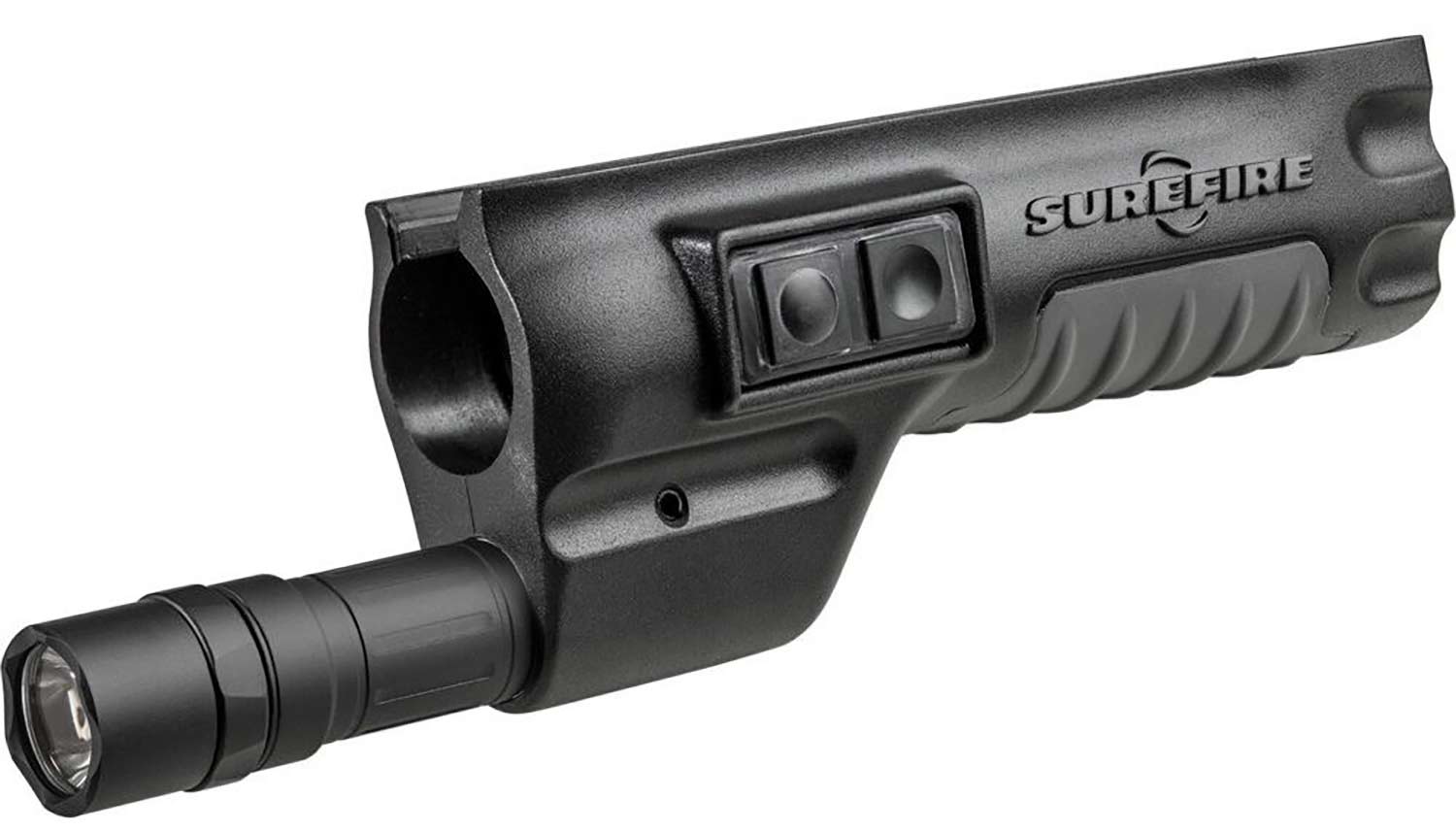
Most factory pump shotgun fore-ends get the job done. But numerous aftermarket replacements exist that offer improved ergonomics and provide increased texture for a non-slip grip. One of the necessities for a home defense shotgun is a white light, and the fore-end is an ideal place to mount one. Since the vast majority of home invasions occur after dark, you’ll want to add a high-output light for positive identification and targeting of a threat. You should never shoot a target that you cannot 100-percent identify. The most important thing to remember when mounting a light on your shotgun is the ability to reach the switch, and that it doesn’t impede your ability to work the pump, or impact your hand during recoil.
My recommendation is one of SureFire’s excellent replacement fore-ends featuring an integrated weapon light and meets the above-mentioned precautions. SureFire is a trusted name in law enforcement and military circles and makes the finest illumination products available today. My preferred model is the 618LMG-B for Remington’s 870. This model replaces the factory pump with a tough, polymer fore-end featuring a recoil-proof high output LED that generates 1,000 lumens of focused white light.
All switches are streamlined, ergonomically placed, and seamlessly integrated into the fore-end. The right side features a 4.5-inch long pressure switch offering momentary-on activation and a system disable rocker switch to prevent accidental activation when not in use. The left side features a constant-on toggle switch allowing you to activate the light and leave it on. This model features SureFire’s proprietary Total Internal Reflection lens that creates a smooth, wide beam with a defined hotspot. It is well-suited for close- to medium-range engagements and is very effective inside and around the perimeter of your home.
Stock Sights Aren’t Good Enough
Most shotguns come from the factory equipped with a small bead at the end of the barrel. That’s fine for hunting, but they’re extremely difficult to see in reduced light and lack precision. Upgrade to a ghost ring rear sight paired with a glowing tritium-powered front sight. This combination is much more accurate and is useable in most lighting conditions. Variations of these sights are standard on many manufacturers tactical models.
For superior accuracy, I recommend a red-dot sight. Shooting a red-dot is so easy it feels like cheating. Red-dot sights give you increased accuracy at virtually all ranges. They make shooting on the move and shooting at moving targets significantly easier. You simply place the dot on the target and squeeze the trigger. Sight alignment is completely out of the equation. The benefits of a red dot become glaringly obvious when engaging a target at night or in reduced lighting conditions, especially when paired with a good white light.
Remington or Mossberg?

Pump shotguns have been serving in a defensive role for a century, but their primary drawback has always been the loading port. Threading one round in at a time into a tubular magazine is slow, and it can be difficult to do in the dark. If you rely on this platform for defense, you can load the magazine, but leave the chamber empty. This is known as “cruiser ready,” and it allows a pump-action to quickly chamber a shotshell. The drawback is the shotgun must remain loaded, as it’s far too time consuming to load the gun and then respond to a bump in the night.
Remington and Mossberg, widely known for their pump guns, have each released detachable magazine-fed versions of their excellent 870 and 590 models, which solves the load/reload conundrum. Remington’s 870DM and Mossberg’s 590M detachable box magazine feeding systems removes the slow reload issue entirely and makes the pump shotgun an even stronger selection for home defense.
Mossberg jumps ahead of Remington in magazine capacity. Remington offers two magazines, one with a three-round capacity, and another that holds six. Mossberg offers four different magazines with capacities ranging from five to 20 rounds in five-round increments. It sounds impressive, but after testing them all, I believe the sweet spot is 10 rounds. Much more than that, and the platform becomes heavy and unwieldy.
Aside from the removable magazines, both the 870DM and 590M models come with desirable features suited for a defensive role. Ghost ring sights adorn the rear of the receivers while bead sights are positioned at the front of the barrels. One of the benefits of the 870DM over the 590M is its Picatinny rail mount that easily accepts a mini red-dot sight. You could easily mount an aftermarket rail section on the 590M as well.
3 More of the Best Home Defense Shotguns

1. Benelli M4
A home defense shotgun article wouldn’t be complete without the inclusion of Benelli’s semiautomatic M-series shotguns. A staple of military and law enforcement units, the M4 is the latest iteration of a proven system. The M4 uses a unique auto-regulating gas system featuring dual stainless-steel, self-cleaning pistons. This system eliminates complicated linkages and other parts traditionally used in semiautomatic shotgun designs. It’s simple, robust, and relied upon by the U.S. Marine Corps. The M4 is topped with a ghost ring rear sight that is paired with a white-dot front blade—both of which are protected by reinforced ears. A Picatinny rail tops the receiver so you can mount a red dot. Check availability here.
2. Kel-Tec KSG
The Kel-Tec KSG is the odd shotgun of the bunch. It’s a unique bullpup-style design and has a substantial, dual magazine capacity. Each magazine bay holds six 3-inch shells each for a total of 12 rounds; or seven 2¾-inch shells per bay, totaling 14. The gun is only 26 inches long, and the KSG accepts a litany of modern accessories: a forward grip, any sighting system you want, and plenty of sling options. If you’re looking for the ultimate in capacity and compactness, look no further than the KSG. Check prices here.
3. Winchester SXP Defender
Winchester’s SXP Defender uses a unique rotary bolt and an inertia-assisted action that make for an incredibly fast action. Four massive bolt lugs provide significant strength and a solid lockup. The SXP Defender features a non-glare matte finish and is equipped with a five-round tube magazine. A durable synthetic stock and ribbed forearm provide a non-slip grip. An Inflex Technology recoil pad is said to mitigate recoil by channeling the recoil impulse, moving the stocks comb downward and away from your face. While the SXP Defender ships with only a bead sight, the receiver is factory drilled and tapped for rails and scope bases. Check availability here.
Outdoor Life is dedicated to covering safe and responsible gun ownership for hunting, recreation, and personal protection. We participate in affiliate advertising programs only with trusted online retailers in the firearms space. If you purchase a firearm using the links in this story, we may earn commission
